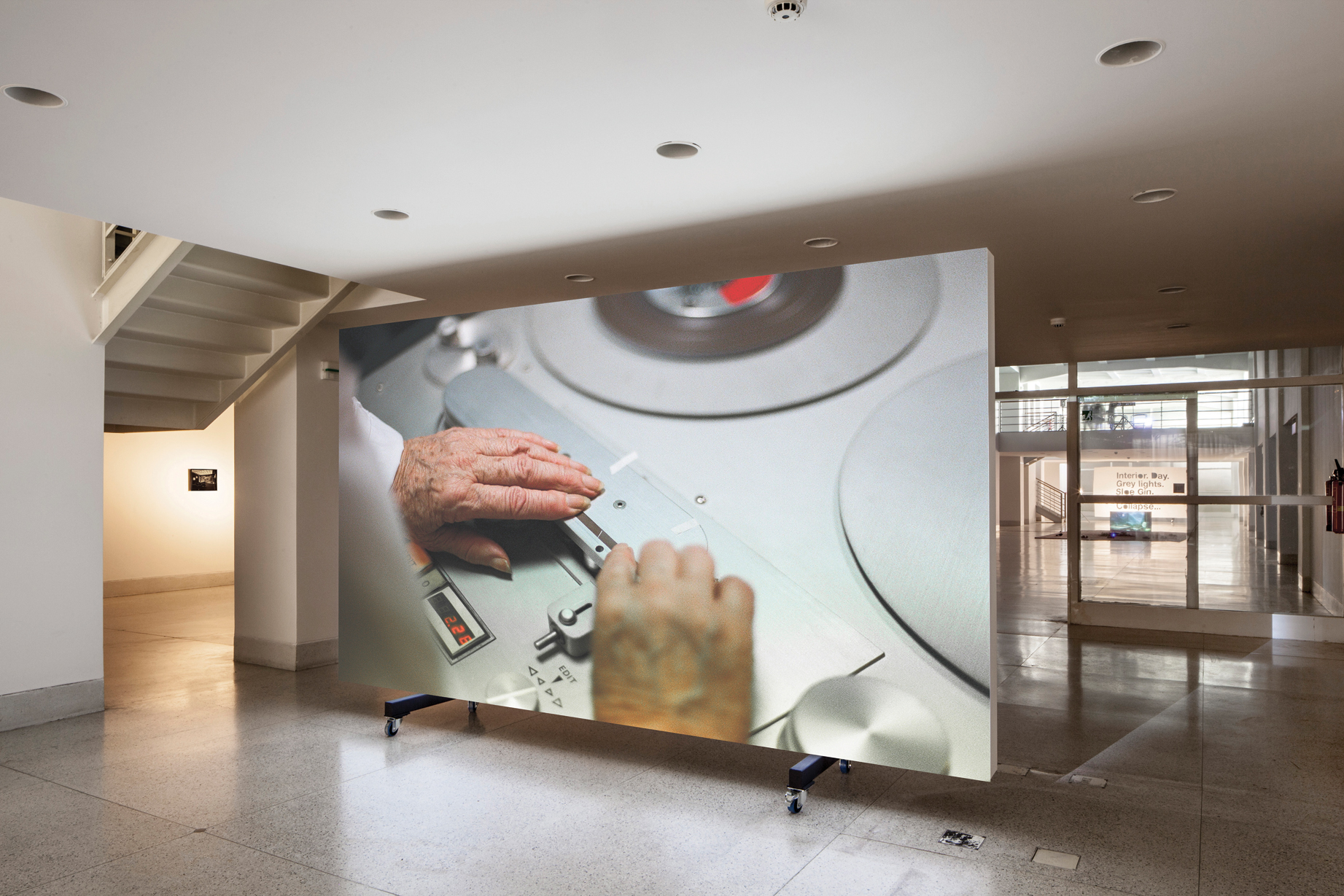Portfolio
Roman Štětina
In the leafy southern stretches of the student-steeped city of Pilsen — you know the beer to which the Bohemian town gave its name — lies a three-story building shielded in pale beige ceramic tile. Ribbon windows, of the sort Le Corbusier insisted upon, slice across the façade; two plush halls, the larger more than 16,000 square feet, are trimmed with acoustic baffles of russet wood. This is the local home of Czech Radio, built from 1947 to 1956, and one of the last great examples of the country’s functionalist architecture before the Sovietization of the building arts. Even when completed it was already archaic. The large-scale recording studio, ideal for orchestras and live plays with a full cast, was no longer essential once audiotape was widely adopted, and in any case, it was prudent to let someone have a listen before broadcast. The station, like all Czech media before 1989, had an in-house censor.

All images courtesy the artist and Polansky Gallery, Prague.
For Roman Štětina, radio is less an artistic medium than a historical fact: an institution whose audible track muffles underlying rules and crackles with subtle erasures. Rummaging through the station archive in Pilsen, he came across a photograph of a listening room decorated with a sound-permeable burlap curtain, which the station’s board members would face as they tested loudspeakers and gave broadcasts a thumbs up or down. The original curtain is lost now; even the designer is unknown, though its wide, occluded triangular forms seem to abstract the tapestry version of Picasso’s Guernica. It resurfaced two years ago, in photographic black-and-white rather than in its original pastels, in Štětina’s Auditorium: a hidden decoration of a people’s palace, now a digital period piece. At shows in Frankfurt and New York the curtain appeared alone, but in Pilsen it was draped in situ, in the stereo auditorium where the original once hung. History is a staticky transmission, and the receiver needs constant upkeep.

Štětina was born in 1986, in the northwest of what was still Czechoslovakia, and his side practice as a musician informed his early videos and photographs: a slapstick sequence making use of sound effect props, or images of ornery objects whose sonic function can only be guessed at. Soon he turned to the employees and specialists who embodied Czech media’s creations and erasures — such as the sound engineer Jitka Borkovcová, the 80-year-old star of Štětina’s Tongue Twister, who splices out spoken blunders with an obsolete reel-to-reel machine and tiny pieces of double-sided tape. Later, at Prague’s Barrandov Studios, a hub for the Czech New Wave which barely survived post-1989 privatization, we watch a Steadicam operator weave and flutter in front of an Op-approved test pattern. But in Štětina’s Test Room the contrivances have come to the forefront, and the cameraman’s balletic, at times halting movements are now their own source of images.

In Instructions for Use of Jiří Kolář, a side-winding new feature-length film, we return to the recording studio in Pilsen, where a veteran radio director is haranguing actors about Kolář’s surreal verse, which fell afoul of Communist strictures in the 1950s. We never hear the final broadcast, only the harried recording session; the actors declaim, stutter, try out inflections; the director closes his eyes, turns his palms skyward, and strains to listen. Guglielmo Marconi, the inventor of radio, became convinced towards the end of his life that sound waves never die; they merely decay, and with the right technology you could pick up the first production of Antigone or the Sermon on the Mount. You need to craft a strong enough antenna, and a radio tuned into the past.